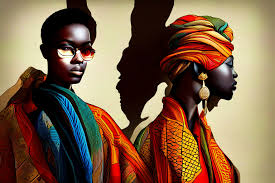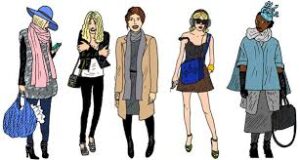Fashion and Identity: The Interwoven Threads of Self-Expression and Culture
Fashion is more than mere clothing; it is a powerful form of self-expression and a reflection of individual and collective identities. Throughout history, the ways in which people dress have signified social status, cultural heritage, personal beliefs, and even political ideologies. As societies evolve, so do their fashion choices, making the study of fashion an essential aspect of understanding identity in a contemporary context. This exploration delves into the intricate relationship between fashion and identity, examining how clothing reflects personal, cultural, and social dimensions.
Understanding Identity
What is Identity?
Identity encompasses the characteristics, beliefs, and expressions that define an individual or a group. It is a multifaceted concept influenced by various factors, including:
- Personal Experiences: Individual life experiences shape how one perceives themselves and their place in the world.
- Cultural Background: Ethnicity, nationality, and cultural practices contribute significantly to identity formation.
- Social Context: The communities and social groups individuals belong to can influence their sense of identity.
The Role of Fashion in Identity
Fashion serves as a visual language through which people express their identities. Clothing choices can communicate aspects of one’s personality, values, and affiliations. The interplay between fashion and identity is evident in several ways:
- Self-Expression: Fashion allows individuals to express their unique personalities and creativity. What one wears can convey mood, confidence, and individuality.
- Cultural Representation: Traditional attire often reflects cultural heritage and can serve as a means of preserving and celebrating cultural identities.
- Group Affiliation: Fashion can signify membership in specific social or cultural groups. For example, subcultures such as punk, goth, or hip-hop often adopt distinctive styles that reflect their values and beliefs.
- Socioeconomic Status: Fashion choices can indicate social class and economic standing. Designer labels and luxury items can signify wealth and status, while thrifted or second-hand clothing may convey a different narrative.
Fashion as a Form of Self-Expression
Personal Identity
Fashion is a powerful tool for self-expression, allowing individuals to communicate their inner selves without uttering a word. Here are some ways fashion facilitates personal identity:
- Individual Style: Personal style is often a reflection of one’s personality. For instance, someone who prefers minimalist aesthetics may value simplicity and functionality, while another who embraces bold patterns and colors may seek to express creativity and vibrancy.
- Emotional Expression: Clothing can be used to convey emotions or states of mind. For example, someone might wear darker colors during times of sadness or brighter hues when feeling joyful.
- Transformation and Reinvention: Fashion provides the opportunity for transformation. Individuals can reinvent themselves through clothing, allowing for personal growth and exploration of different facets of their identities.
Fashion in the Digital Age
The advent of social media has revolutionized how individuals express their identities through fashion. Platforms like Instagram and TikTok enable users to showcase their styles, connect with like-minded individuals, and participate in global fashion conversations.
- Influencer Culture: Fashion influencers play a significant role in shaping contemporary identities. They curate personal brands that resonate with their followers, often blurring the lines between personal style and commercial fashion.

- Diversity and Representation: The digital space has amplified voices and styles from diverse backgrounds, allowing for a broader representation of identities. Individuals from various cultures can share their fashion narratives, promoting inclusivity and understanding.
Cultural Identity and Fashion
Cultural Heritage
Fashion is a significant marker of cultural identity, often reflecting traditions, values, and histories. Many cultures have specific clothing styles that carry deep meaning and significance:
- Traditional Attire: Traditional garments, such as kimono in Japan or sari in India, represent cultural heritage and identity. Wearing these items can foster a sense of belonging and pride in one’s cultural background.
- Ritual and Ceremony: Fashion often plays a role in cultural rituals and ceremonies. Clothing worn during weddings, festivals, and religious events can symbolize beliefs and practices that are integral to a community’s identity.
Globalization and Cultural Exchange
Globalization has facilitated cultural exchange, leading to the blending of fashion influences across borders. While this can promote appreciation for diverse styles, it also raises questions about cultural appropriation.
- Cultural Appropriation vs. Appreciation: The adoption of elements from one culture by another can be controversial. For instance, when fashion brands incorporate traditional motifs or clothing styles without proper acknowledgment or respect, it can lead to accusations of cultural appropriation.
- Fusion Fashion: Some designers and individuals blend elements from multiple cultures, creating fusion fashion that celebrates diversity while respecting cultural origins. This approach can foster dialogue and understanding among different cultural identities.
Group Identity and Fashion
Subcultures and Fashion Statements
Fashion is often employed to signal group affiliation. Subcultures create distinctive styles that reflect their values and beliefs:
- Punk Fashion: Originating in the 1970s, punk fashion is characterized by rebellious and anti-establishment aesthetics, including ripped clothing, leather jackets, and unconventional hairstyles. This style reflects a rejection of mainstream norms and a desire for individuality.
- Hip-Hop Culture: Emerging from African American communities in the late 20th century, hip-hop fashion incorporates baggy clothing, sneakers, and accessories that signify street culture and identity. It is often a form of resistance and empowerment.
Political Statements
Fashion can also serve as a platform for political expression. Activism through clothing has gained traction in recent years:
- Protest Fashion: Clothing adorned with slogans, symbols, or colors representing social movements can amplify political messages. For instance, wearing black during the Black Lives Matter protests signifies solidarity and awareness of systemic racism.
- Fashion as Protest: Designers and brands are increasingly using their platforms to advocate for social justice, sustainability, and other pressing issues. Collections that challenge the status quo can serve as powerful statements about identity and values.
The Intersection of Fashion, Identity, and Sustainability
Conscious Consumerism
As awareness of environmental issues grows, consumers are becoming more mindful of their fashion choices. Sustainable fashion encourages individuals to consider the impact of their clothing on the planet and society:
- Ethical Brands: Many consumers seek brands that align with their values, opting for companies that prioritize ethical labor practices and sustainable materials. This shift reflects a growing awareness of how fashion intersects with social and environmental issues.
- Minimalism and Capsule Wardrobes: The rise of minimalist fashion advocates for intentional purchasing and a focus on quality over quantity. Building a capsule wardrobe encourages individuals to curate their style while minimizing waste.
Identity in the Age of Sustainability
Sustainable fashion offers individuals the opportunity to redefine their identities in relation to environmental consciousness. Consumers may identify as eco-conscious or socially responsible, reflecting their commitment to sustainable practices through their fashion choices.
- Activism and Identity: Fashion can be a medium for environmental activism, allowing individuals to express their commitment to sustainability. Wearing sustainable brands or upcycled clothing can signal a desire to promote positive change.
Challenges and Critiques
The Fast Fashion Dilemma
While fashion serves as a means of identity expression, the fast fashion industry poses significant challenges. The quick turnover of trends encourages overconsumption and waste, undermining the values of sustainability and ethical production.
Exclusivity and Accessibility
Not all individuals have equal access to fashion, which can create barriers to identity expression. High-end designer brands may perpetuate exclusivity, limiting access based on socioeconomic status. This raises questions about who gets to define trends and who is included in fashion narratives.
Conclusion
The relationship between fashion and identity is intricate and multifaceted, shaped by personal experiences, cultural backgrounds, and social contexts. Fashion acts as a canvas for self-expression, a reflection of cultural heritage, and a symbol of group affiliation. In a globalized world, the intersections of these identities become increasingly complex, with both opportunities and challenges.
As consumers and brands navigate the evolving landscape of fashion, the importance of ethical practices and sustainability becomes paramount. Ultimately, the way we choose to express our identities through fashion can foster inclusivity, celebrate diversity, and promote positive change in society. By understanding the profound connection between fashion and identity, we can appreciate the richness of human experience and the myriad ways we communicate who we are to the world.
